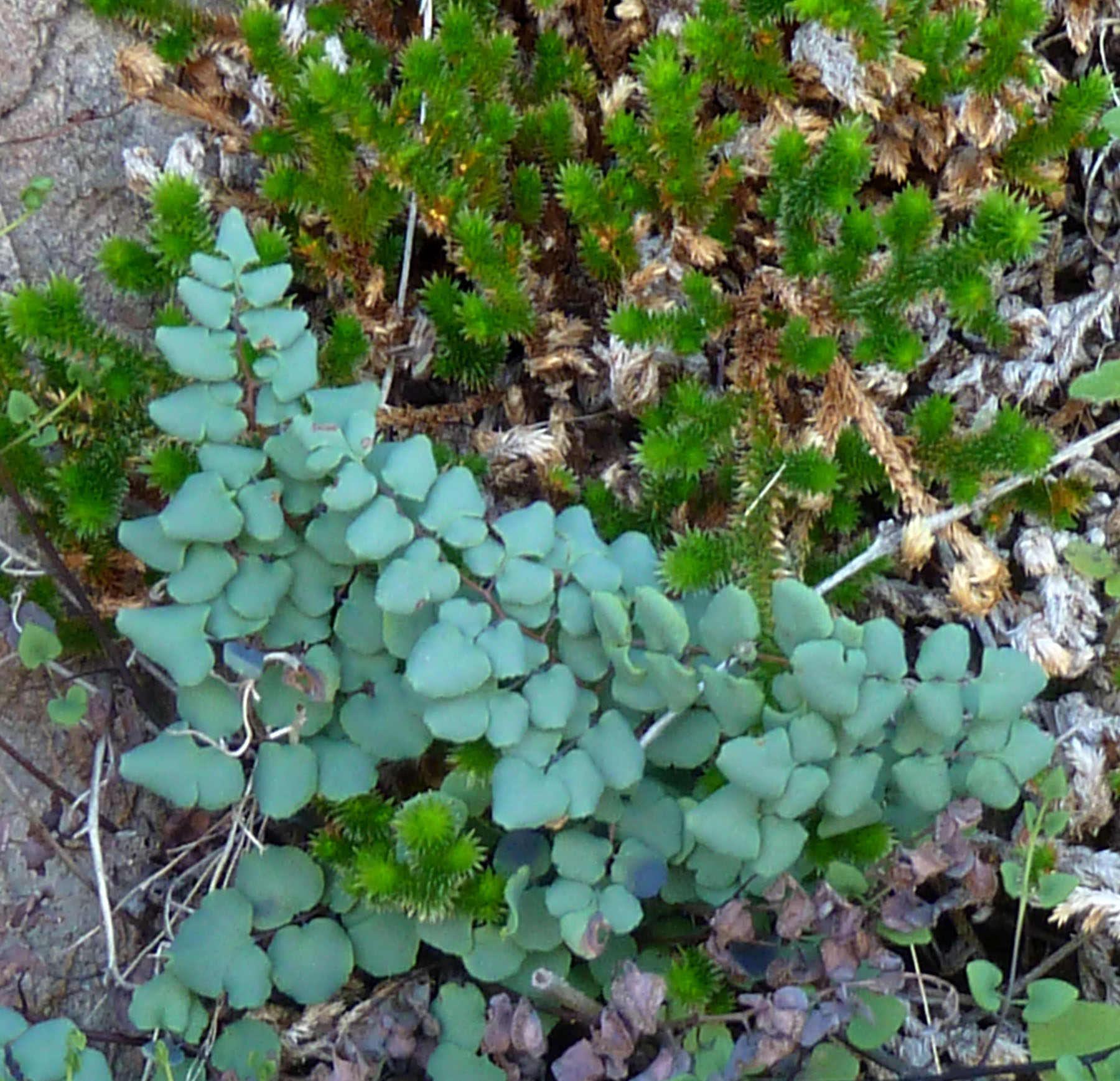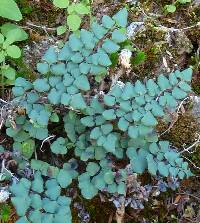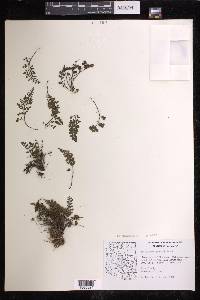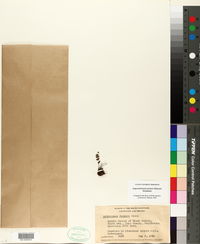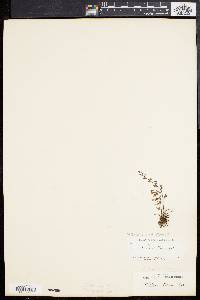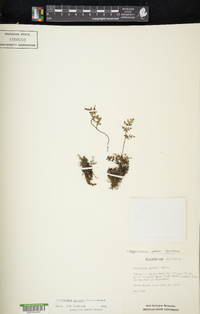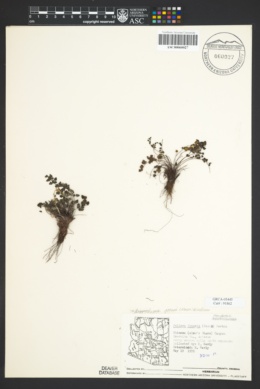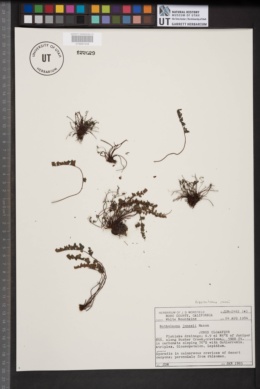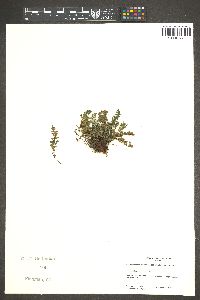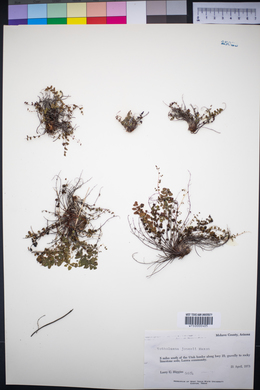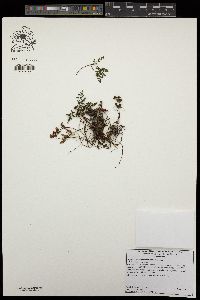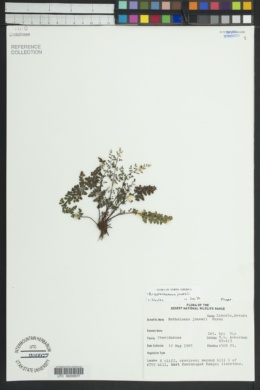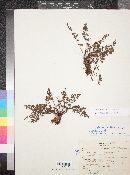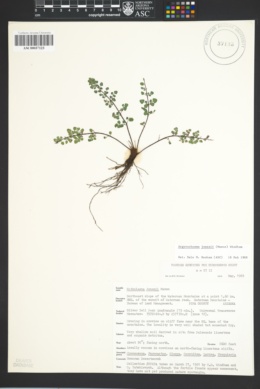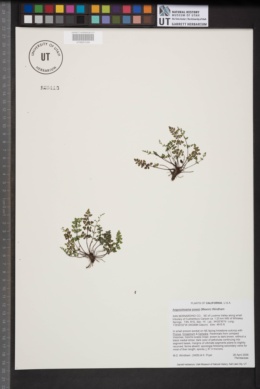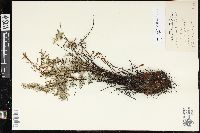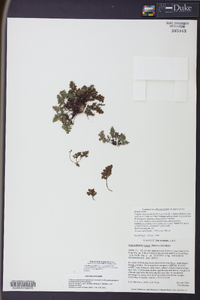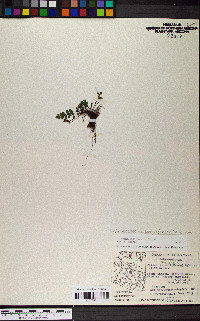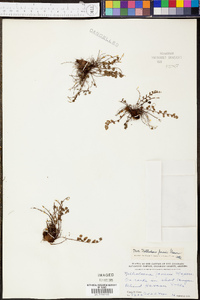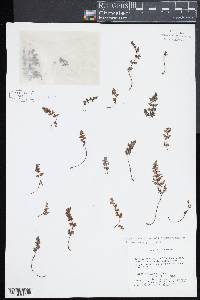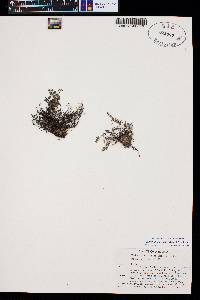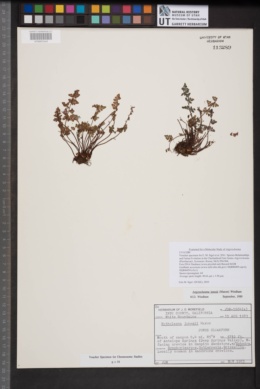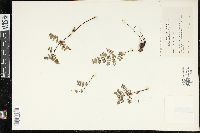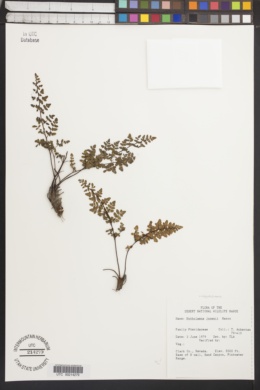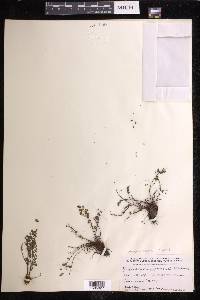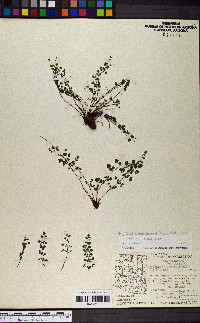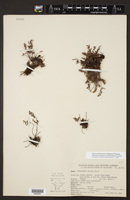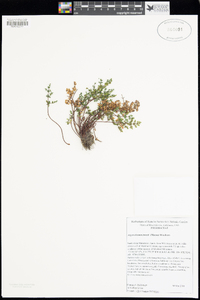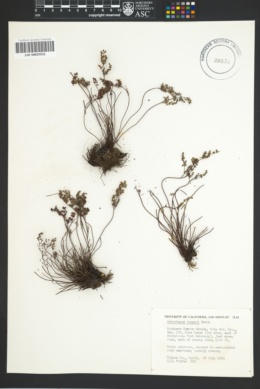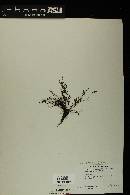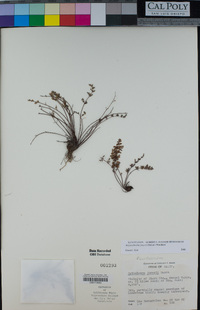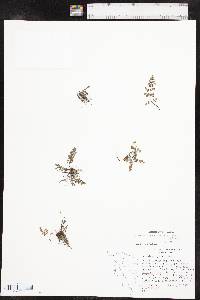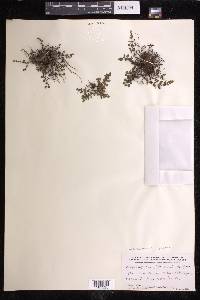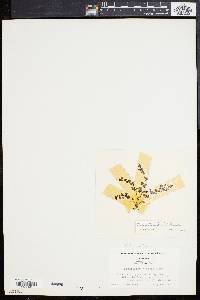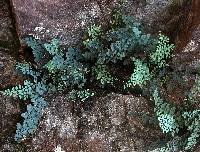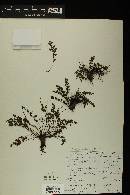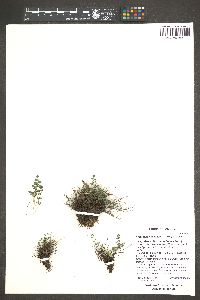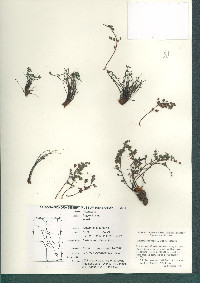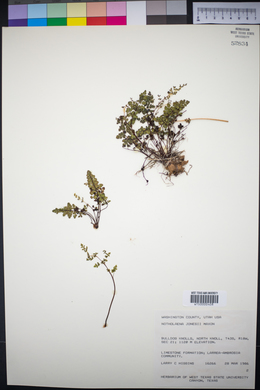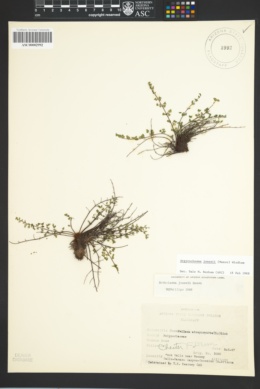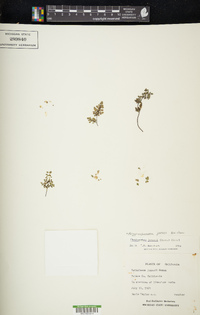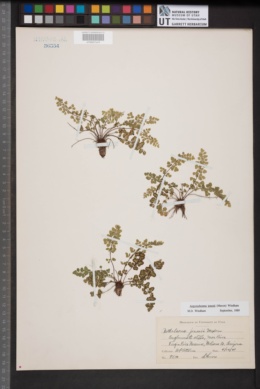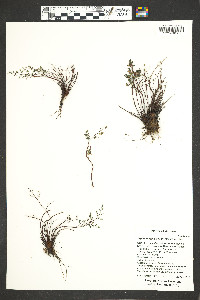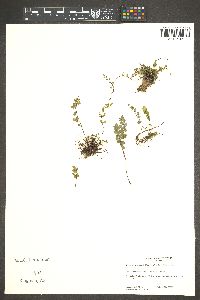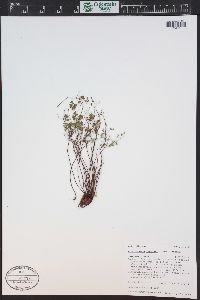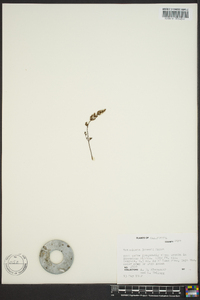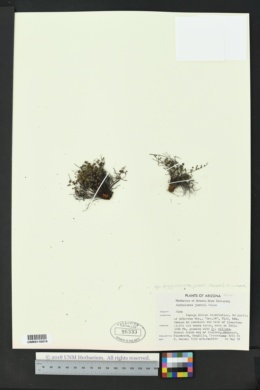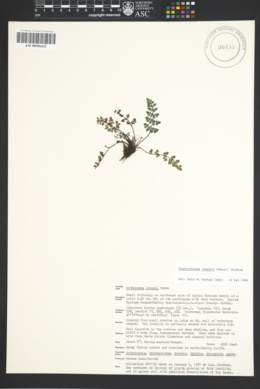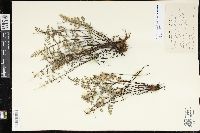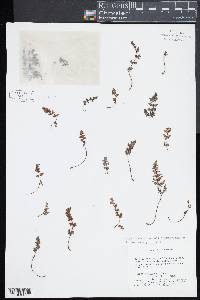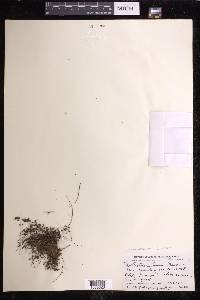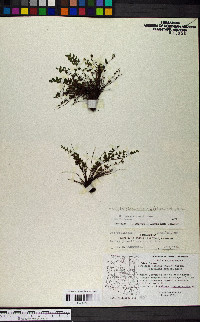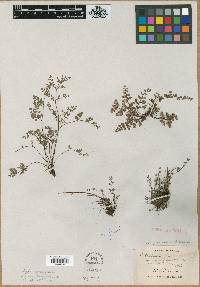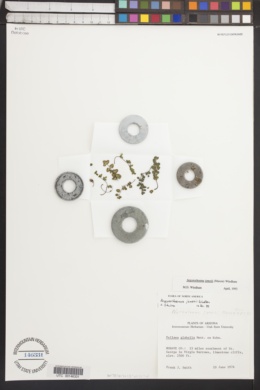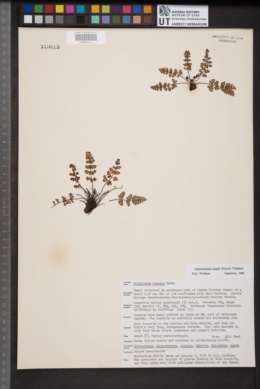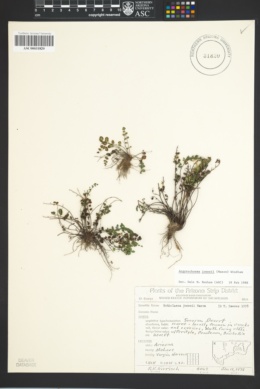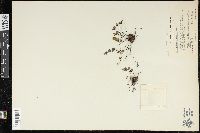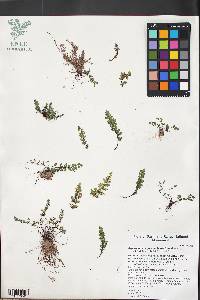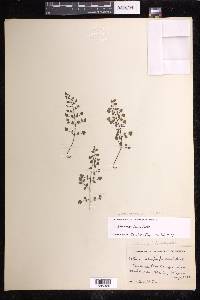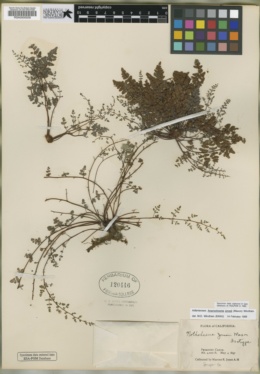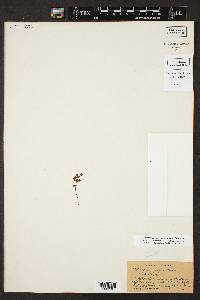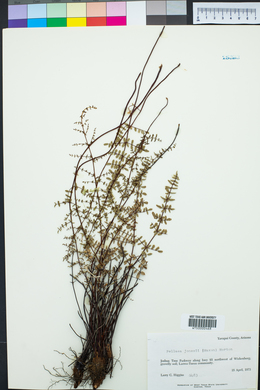Argyrochosma jonesii
|
|
|
|
Family: Pteridaceae
Jones' False Cloak Fern, more...Jones lipfern, Jone's lipfern
[Cheilanthes jonesii (Maxon) Munz, moreNotholaena jonesii Maxon, Pellaea jonesii (Maxon) Morton] |
Stem scales brown to nearly black. Leaves 4--15 cm. Petiole dark brown, 0.75--1.5 mm diam. Blade ovate-lanceolate, 2--3-pinnate proximally, leathery, abaxially and adaxially glabrous; rachis rounded to slightly flattened adaxially. Pinna costae straight or nearly so, branches not arising from prominent angles. Ultimate segments not articulate, dark color of stalks continuing into segment bases abaxially; segment margins plane to slightly recurved, not concealing sporangia; veins obscure adaxially. Sporangia submarginal, borne on distal 1/2 of secondary veins, containing 64 spores. 2 n = 54, 108. Sporulating spring--fall. Calcareous cliffs and ledges; 600--1900 m; Ariz., Calif., Nev., Utah; Mexico in Sonora. Argyrochosma jonesii includes two sexually reproducing cytotypes. The diploid is known from a few localities in the Sonoran and Mojave Deserts; the tetraploid is found throughout the Mojave Desert and cismontane southern California. Although subtle morphologic differences exist between these cytotypes, they are distinguished primarily by characteristics known to correlate with increases in ploidy level (such as spore size and the length of stomatal guard cells). Further investigation is necessary to determine whether the tetraploid arose through autopolyploidy or hybridization between cryptic species.
General: Small tufted fern from short, conspicuously scaly rhizome, the leaves 4-15 cm long. Leaves: Entire with rachis 3-10 cm long, terete to slightly flattened adaxially, these reddish-brown to dark brown, glabrous, the blades oblong ovate to triangular, bipinnate to partly tripinnate, final segments small, 1.5-4.5 mm long, obtuse at base, acuminate at apex, both surfaces glabrous, not glaucous, dark blue-green with the ultimate segments ovate to deltate, not curled when dry, the veins obscure adaxially. Sporangia: The segment margins under rolled but not covering the sporangia, borne on distal half of secondary veins with 64 spores. Ecology: Found on ledges of limestone and igneous rocks from 2,000-6,000 ft (610-1981 m), sporulates from spring to the fall. Notes: "Argyrochosma jonesii includes two sexually reproducing cytotypes. The diploid is known from a few localities in the Sonoran and Mojave Deserts; the tetraploid is found throughout the Mojave Desert and cismontane southern California. Although subtle morphologic differences exist between these cytotypes, they are distinguished primarily by characteristics known to correlate with increases in ploidy level (such as spore size and the length of stomatal guard cells). Further investigation is necessary to determine whether the tetraploid arose through autopolyploidy or hybridization between cryptic species." FNA 1993 Etymology: Argyrochosma comes from Greek argyros, silver and chosma, mound, a reference to the powdery substance on the leaves, while jonesii is named for Marcus Eugene Jones (1852-1934) a self taught botanist who was famous for self publishing his research. Sources: Lellinger 1985, Welsh et al. 2003, FNA 1993 Lellinger 1985, Welsh et al. 2003, FNA 1993 Common Name: Jones' false cloak fern Wetland Status: None Rarity: G4? General: Small tufted fern from short, conspicuously scaly rhizome, the leaves 4-15 cm long. Leaves: Entire with rachis 3-10 cm long, terete to slightly flattened adaxially, these reddish-brown to dark brown, glabrous, the blades oblong ovate to triangular, bipinnate to partly tripinnate, final segments small, 1.5-4.5 mm long, obtuse at base, acuminate at apex, both surfaces glabrous, not glaucous, dark blue-green with the ultimate segments ovate to deltate, not curled when dry, the veins obscure adaxially. Sporangia: The segment margins under rolled but not covering the sporangia, borne on distal half of secondary veins with 64 spores. Ecology: Found on ledges of limestone and igneous rocks from 2,000-6,000 ft (610-1981 m), sporulates from spring to the fall. Ethnobotany: Unknown Etymology: Argyrochosma comes from Greek argyros, silver and chosma, mound, a reference to the powdery substance on the leaves, while jonesii is named for Marcus Eugene Jones (!852-1934) a self taught botanist who was famous for self publishing his research and thumbing his nose at the Eastern botanical establishment. Synonyms: Cheilanthes jonesii, Notholaena jonesii, Pellaea jonesii Editor: SBuckley 2012 |

